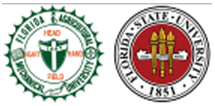
|
Biofilter Project |

|
Gang Chen, Ph.D., P.E. |
|
Professor |
|
Aerated Recirculation and Pressurized Suspended Fiber Biofiltration for the Treatment of Landfill Leachate |
|
Sponsored by the Hinkley Center for Solid and Hazardous Waste Management. Duration: September, 2013 to August, 2014 |
|
Objective: Recirculating leachate appears to be one of the least expensive methods for partial treatment and disposal of leachate at properly designed and operated landfill sites. The leachate recirculation not only improves the leachate quality, but also shortens the time required for landfill stabilization. In addition, aerated leachate recirculation may bring air into the landfill, leading to aerobic degradation of organic compounds and precipitation of heavy metals. Aerated recirculation also promotes nitrification, which makes it possible to remove nitrogen through denitrification after oxygen is consumed at the bottom part of the landfill. Although aerated leachate recirculation has these advantages, leachate is only partially treated. The leachate must be further treated in order to meet the discharge requirements. In this research, aerated recirculation and pressurized suspended fiber biofiltration will be tested for the treatment of leachate from landfills in Northwest Florida. The pressurized suspended fiber biofilter will be configured to allow biological contact oxidation, a novel and efficient treatment process for enhanced organic and iron removal. In between aerated leachate recirculation and pressurized suspended fiber biofiltration, ammonium and chloride in the leachate will be removed through magnesium ammonium phosphate (MAP) precipitation and the ultra-high lime with aluminum process. From this research, the best operation parameters will be identified for leachate recirculation, MAP precipitation, the ultra-high lime with aluminum process, and pressurized suspended fiber biofiltration operations. Cost and space saving will be analyzed and compared with that of the conventional aerobic activated sludge systems.
Rationale: Leachate recirculation can improve the leachate quality and shorten the time required for landfill stabilization from several decades to 2 to 3 years. However, after recirculation, more efficient treatment methods are required to further treat the leachate in order to meet the discharge requirements. Pressurized suspended fiber biofiltration can removal organic compounds and heavy metals more efficiently than conventional biological methods through biological contact oxidation. Especially, the biological contact oxidation has extreme advantages in iron removal by fixing iron onto the filter media. Consequently, there is minimal ferric iron suspending in the solution that can escape the filter. Besides organic contaminants and heavy metals, landfill leachate also contains high concentrations of ammonium and chloride, which are released from hydrolysis of proteins of the solid waste and ashes of waste-to-energy processes. To efficiently remove ammonium and chloride, MAP precipitation and the ultra-high lime with aluminum process will be arranged in between aerated leachate recirculation and pressurized suspended fiber biofiltration. The combined aerated leachate recirculation and pressurized suspended fiber biofiltration, together with MAP precipitation and the ultra-high lime with aluminum process, will provide a new alternative means for the treatment of landfill leachate with high organic, nitrogen, chloride and iron contents.
|
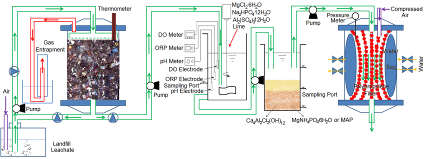
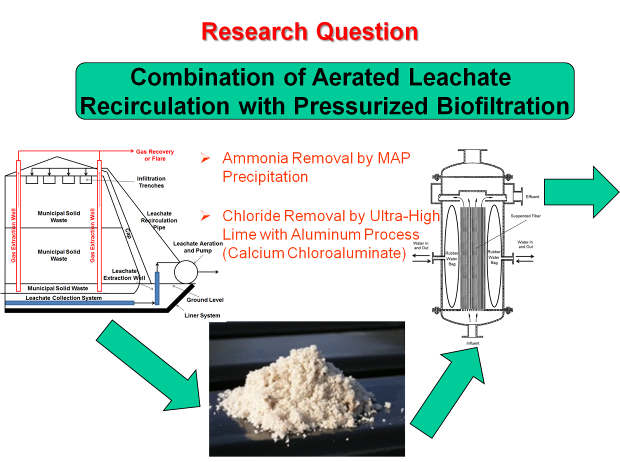
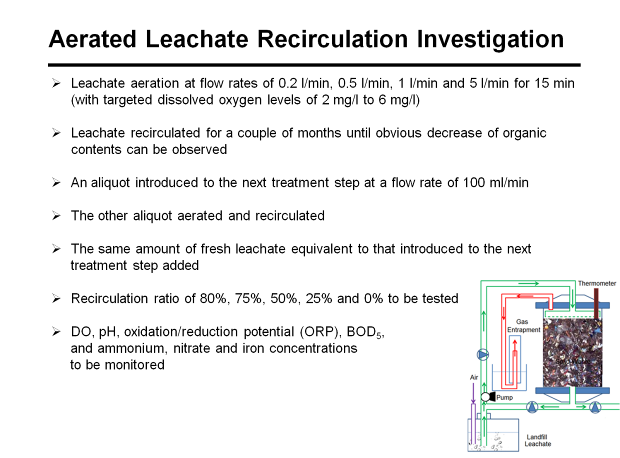
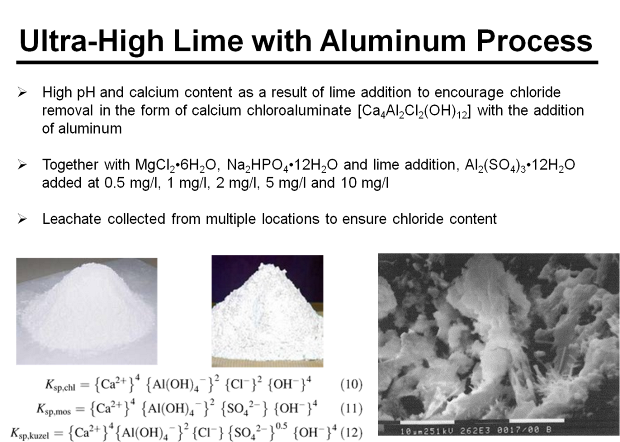
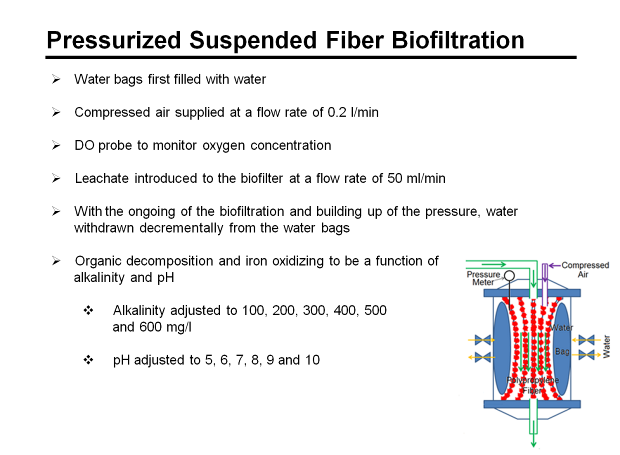
|
Students Working on the Project |
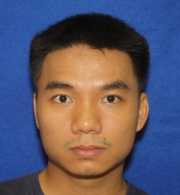
|
Kein Vu, Ph.D. Student at Florida State University |
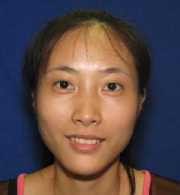
|
Weijie Xie, Master of Science Student at Florida State University |
